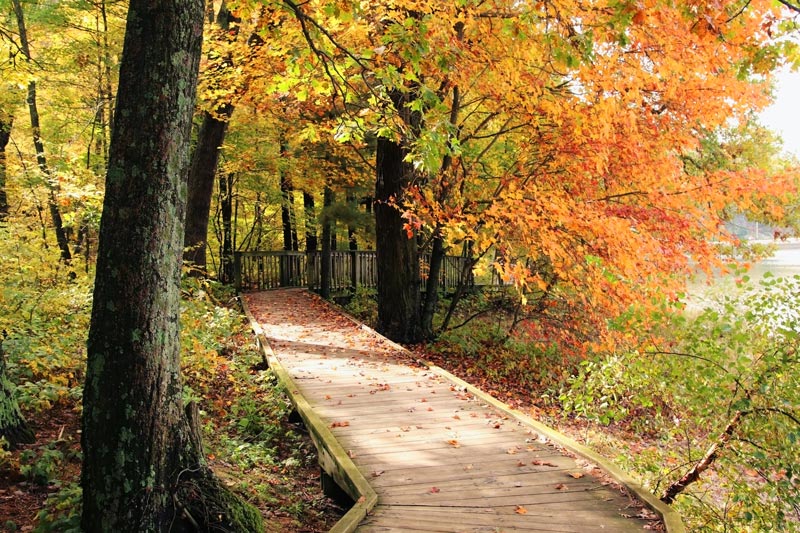Written by Thad Brown, Owner and Founder, Dynamic Alliance Roofing LLC – Wisconsin Rapids, WI
Every fall, Wisconsin puts on a show. Leaves turn to fire-colored confetti, Packers flags reappear on front porches, and somewhere in the mix, the temperature drops 40 degrees in a single afternoon just to keep things exciting. It’s about this time every year I start getting calls that begin with something like, “I didn’t notice it in the summer, but now my roof is doing something weird.”
Welcome to fall roofing season.
After over 40 years climbing ladders and squinting at shingles, I’ve come to think of fall as the final exam for any Wisconsin roof. If it passes, great—carry on and enjoy the brats and bonfires. If it doesn’t… well, let’s just say it’s cheaper to deal with a roof in September than in February when it’s buried under a foot of snow and leaking like a colander.
The Annual Freeze-and-Thaw Rodeo
Fall weather in this part of the country isn’t just cool and breezy. It’s moodier than a teenager without Wi-Fi. One day it’s 75 and sunny, the next morning there’s frost on the pumpkins. That’s not just a wardrobe problem—it’s a roofing problem.
Shingles and roofing materials expand and contract with temperature swings. Do that enough times in a short period, and even the toughest roof starts showing signs of fatigue. Cracks widen, seals loosen, nails shift, and suddenly what was once “solid” is now letting in water, wind, or the occasional squirrel with bad intentions.
Water Finds a Way
Wisconsin’s fall rainstorms might not seem like a big deal, but if your roof has even one tiny entry point—a lifted shingle, cracked flashing, or a nail pop—water’s going to find it. Once it’s in, it doesn’t leave. It hides in insulation, drips down drywall, or soaks into wooden decking.
What begins as a harmless drip in October turns into a bloated ceiling tile by Thanksgiving and a full-blown mold party by New Year’s. And if you’ve ever tried removing mold from an attic when it’s 12 degrees outside, let me assure you—it’s not festive.
When Leaves Attack
Leaves seem innocent until they start clogging up every gutter in sight. A blocked gutter means water isn’t draining properly. Water that doesn’t drain properly finds the path of least resistance, and that usually means under the shingles, into the fascia, or pooling on the eaves until it freezes and becomes the starting point of an ice dam.
Fall is prime time for leaf buildup. A good gutter cleaning can save a roof from a whole season’s worth of headaches. That said, if the gutters sag when touched or resemble a small jungle ecosystem, it might be time to do more than just scoop and rinse.
Trees: Both Friend and Foe
Trees are beautiful in autumn… until they drop a branch through your roof. If a tree limb is close enough to scrape the roof in a breeze, it’s close enough to cause trouble in a storm. I’ve seen shingles worn down to the mat just from one limb tapping the same spot for years. It’s like nature’s version of Chinese water torture—slow, relentless, and eventually expensive.
Trimming branches now, while the weather’s cooperative, beats trying to do it after one’s already made a skylight where there wasn’t one before.
Why Roofs Age Faster Than Dogs
Roofs have a thankless job. They get rained on, baked, frozen, and stepped on—and no one compliments them unless there’s a leak. The average asphalt shingle roof lasts about 20–25 years, but that’s assuming decent weather, good installation, and some occasional TLC.
If the shingles are curling, balding, cracking, or just looking sad in general, fall is the time to assess whether patching will do the trick or if it’s time for a full replacement. Patching in fall beats tearing off in winter—trust me on this one. Roofers love their jobs, but nobody enjoys holding a nail gun when it’s below zero and the wind’s doing 20 mph sideways.
Inspections: Better Now Than When It’s Snowing
A roof inspection in the fall gives you a snapshot of the system before the freeze. This isn’t about scare tactics—it’s about catching problems early. A lifted shingle today might be a missing row tomorrow. A bit of flashing that’s slipped an inch could become a waterfall over the holidays.
Even newer roofs benefit from a once-over this time of year. Construction settles, wind happens, birds get bold. It doesn’t take much to knock a vent loose or shift a boot cover just enough to let moisture in.
Fall Projects Have a Deadline
Roofing work gets trickier as winter approaches. Adhesives don’t like the cold. Shingles become brittle. Safety becomes a real concern. That’s why most roofing schedules start to fill up fast in early fall. Once mid-November hits, outdoor work slows down unless there’s an emergency—and those tend to come at the worst possible time.
Final Thoughts from the Ladder
Roofing isn’t always glamorous, but it’s necessary. In this part of the country, fall isn’t just pumpkin spice season—it’s the last call for roof care before the weather turns mean. Whether it’s checking flashing, replacing worn shingles, clearing gutters, or just doing a walk-around to make sure nothing looks out of place, a little effort now can save a lot of trouble later.
Besides, winter’s hard enough without finding out your ceiling is dripping during the Packers game.



